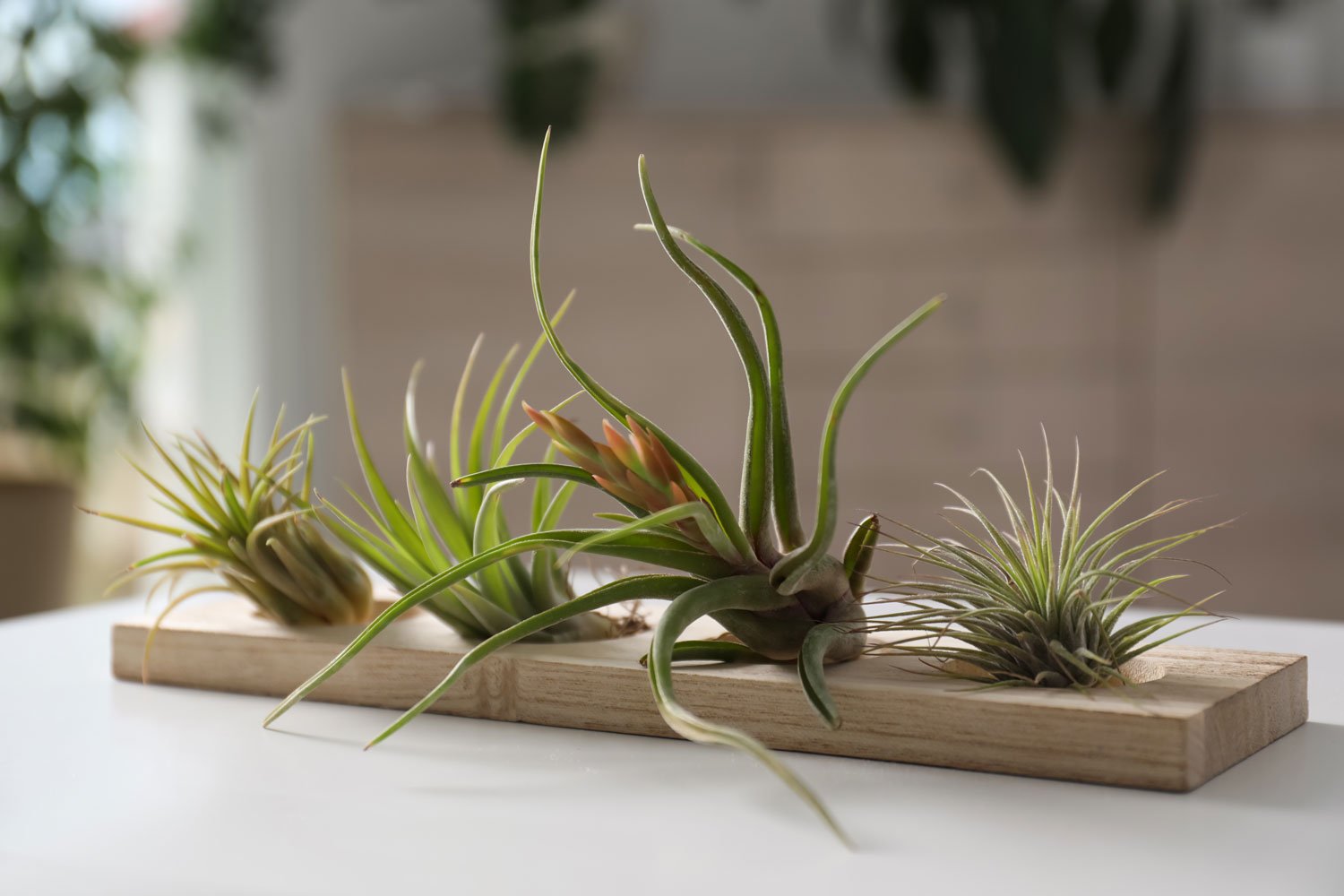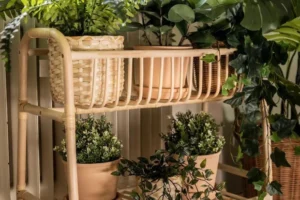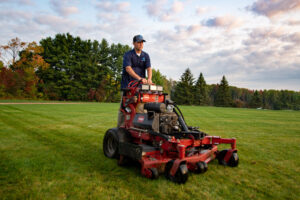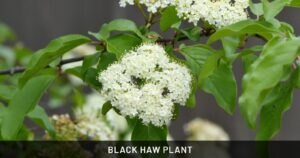Air plants, also known as Tillandsia, are unique and fascinating plants that thrive without soil. They absorb nutrients and moisture from the air through their leaves, making them a versatile and low-maintenance choice for plant lovers. Whether displayed in hanging planters, terrariums, or mounted on driftwood, air plants add an aesthetic touch to any space. Here’s a complete guide on how to grow and care for air plants successfully.
What is Air Plants?
Air plants, scientifically known as Tillandsia, are unique, low-maintenance plants that do not require soil to grow. They belong to the Bromeliaceae family and are native to the forests, mountains, and deserts of Central and South America, as well as parts of the southern United States. Air plants absorb water and nutrients through tiny hair-like structures called trichomes on their leaves, rather than through their roots, which primarily serve as anchors.
One of the most fascinating aspects of air plants is their ability to thrive in diverse environments by attaching themselves to trees, rocks, or even artificial surfaces. They are epiphytes, meaning they grow on other plants or objects without drawing nutrients from them, making them ideal for creative displays in homes and offices.
Air plants come in various shapes, sizes, and colors, ranging from the silvery-gray Tillandsia xerographica, known for its elegant, curled leaves, to the vibrant green Tillandsia ionantha, which turns red when about to bloom. They produce stunning, tubular flowers in shades of purple, pink, or yellow, adding a pop of color to their surroundings.
Caring for air plants is simple and involves regular misting or soaking them in water for about 20-30 minutes every week, depending on the humidity levels of their environment. They thrive in bright, indirect sunlight and good air circulation, which prevents rot and ensures healthy growth.
Air plants are popular in interior décor due to their versatility and minimal upkeep. They can be placed in terrariums, mounted on driftwood, or even suspended in hanging arrangements, making them perfect for modern, space-saving designs.
Overall, air plants are an excellent choice for plant enthusiasts looking for an easy-to-care-for, visually appealing addition to their home or office.
What Are the Best Air Plants?
Air plants (Tillandsia) come in a variety of shapes, sizes, and colors, making them a popular choice for home and office décor. Some air plants are better suited for beginners due to their hardiness, while others are prized for their unique appearance or vibrant blooms. Here are some of the best air plants to consider:
1. Tillandsia Ionantha
One of the most popular air plants, Tillandsia ionantha is known for its small, compact size and vibrant green leaves that turn red or pink when blooming. It produces beautiful purple flowers and is easy to care for, making it perfect for beginners.
2. Tillandsia Xerographica
Often considered the “queen” of air plants, Tillandsia xerographica has striking silvery-gray leaves that curl elegantly. It is drought-tolerant and thrives in bright, indirect light. Its slow growth and long lifespan make it an excellent decorative choice.
3. Tillandsia Caput-Medusae
Named after the mythical Medusa due to its tentacle-like leaves, this air plant has a unique, twisted appearance. It prefers moderate humidity and indirect sunlight, producing tubular red or purple flowers when mature.
4. Tillandsia Bulbosa
Recognizable by its bulbous base and long, wavy leaves, Tillandsia bulbosa thrives in humid environments and lower light conditions. It has a striking dark green color and an otherworldly appearance that adds a touch of intrigue to any space.
5. Tillandsia Stricta
A hardy and fast-growing variety, Tillandsia stricta features thin, pointed leaves that can turn pink or red before blooming. It adapts well to different environments and produces lovely blue or pink flowers.
6. Tillandsia Tectorum
This air plant stands out with its fuzzy, white trichomes that give it a soft, silvery appearance. It thrives in bright, dry conditions and requires less frequent watering than other varieties.
7. Tillandsia Brachycaulos
With broad, green leaves that blush red when in bloom, Tillandsia brachycaulos is a vibrant choice for air plant enthusiasts. It can handle more frequent watering and adapts well to various environments.
8. Tillandsia Funckiana
This unique species has thin, needle-like leaves that grow in a spiral pattern. It prefers high humidity and produces brilliant red blooms when given proper care.
9. Tillandsia Harrisii
Known for its soft, velvety texture due to its high trichome density, Tillandsia harrisii is highly drought-resistant and prefers bright, indirect light. Its striking silvery hue makes it an attractive addition to any collection.
10. Tillandsia Usneoides (Spanish Moss)
Unlike other air plants, Tillandsia usneoides grows in long, trailing strands and thrives in humid environments. It’s often used in hanging arrangements, making it ideal for draping over branches or trellises.
Choosing the Best Air Plant for Your Space
When selecting an air plant, consider factors such as lighting, humidity, and your level of experience with plant care. Hardy varieties like Tillandsia ionantha and Tillandsia xerographica are great for beginners, while unique options like Tillandsia caput-medusae or Tillandsia tectorum can add a statement to your space.
With their low-maintenance nature and striking appearance, air plants are a wonderful way to bring greenery into your home or workspace effortlessly.
Choosing the Right Air Plant
There are over 600 varieties of air plants, each with unique shapes, colors, and sizes. Some popular types include:
- Tillandsia Ionantha: Small, spiky, and vibrant, ideal for compact spaces.
- Tillandsia Xerographica: Large, curly leaves that make a dramatic statement.
- Tillandsia Bulbosa: Unique, tentacle-like leaves that twist and curl.
- Tillandsia Caput-Medusae: Resembling Medusa’s head, this variety has thick, curving leaves.
Choose a variety based on your aesthetic preference and the environment you can provide.
Light Requirements
Air plants thrive in bright, indirect light. Place them near windows with filtered sunlight or under fluorescent lights if grown indoors. Avoid direct sunlight, as it can scorch their delicate leaves. Ideal locations include:
- Near an east or south-facing window with sheer curtains.
- In well-lit bathrooms where humidity levels are higher.
- Under grow lights if natural light is limited.
Watering Air Plants
Watering air plants properly is essential for their health. Follow these simple guidelines:
- Soaking Method: Submerge the air plant in room-temperature water for 20-30 minutes once a week.
- Misting: In drier environments, mist the plant 2-3 times a week using a spray bottle.
- Drying: After watering, shake off excess water and place the plant in an airy location to dry within 4 hours to prevent rot.
Use distilled or rainwater for best results, as tap water with chlorine can harm the plant.
Temperature and Humidity
Air plants prefer temperatures between 50-90°F (10-32°C) and thrive in humidity levels of 50-70%. If your home is dry, consider using a humidifier or placing the plants in naturally humid areas, such as bathrooms or kitchens.
Fertilizing Air Plants
Feed air plants with a bromeliad or air plant-specific fertilizer once a month to encourage growth and blooming. Dilute the fertilizer to half strength and apply during regular watering.
Displaying Air Plants
Air plants are incredibly versatile and can be displayed in creative ways, such as:
- Hanging glass terrariums.
- Mounted on driftwood, stones, or shells.
- Placed in decorative bowls with pebbles.
- Suspended with wire or fishing line for a floating effect.
Ensure the display allows proper air circulation to prevent rot.
Common Problems and Solutions
- Brown Tips: Usually caused by underwatering or low humidity; increase watering frequency.
- Rotting Base: Often due to overwatering; ensure proper drying after watering.
- Curling Leaves: Can be a sign of dehydration; provide more frequent misting.
Propagation of Air Plants
Air plants reproduce by producing small “pups” at the base of the parent plant. Once these pups reach about one-third the size of the parent, they can be gently separated and grown independently.
Do Air Plants Require Soil?
Unlike traditional plants, air plants do not require any soil to grow. They belong to the epiphyte family, meaning they naturally grow on other surfaces such as tree branches, rocks, or even power lines in their native tropical environments. Instead of drawing nutrients from soil, air plants absorb water and essential nutrients through their trichomes—tiny hair-like structures on their leaves.
Why Air Plants Don’t Need Soil
- Natural Habitat: Air plants are native to rainforests, deserts, and mountainous regions where they cling to trees or rocks and thrive on ambient moisture and organic debris.
- Absorption Method: They utilize trichomes to capture water and nutrients from the air, eliminating the need for soil.
- Root Function: The roots of air plants mainly serve as anchors to attach to surfaces rather than absorbing nutrients like soil-based plants.
How to Provide Necessary Nutrients Without Soil
Since air plants do not require soil, providing the right care is essential to ensure they receive the nutrients they need. Consider the following care methods:
- Watering:
- Soak the plant in water for 20-30 minutes once a week.
- Misting 2-3 times a week in dry environments.
- Ensure the plant dries completely to prevent rot.
- Fertilization:
- Use a diluted air plant fertilizer once a month to supplement nutrients.
- Specialized bromeliad fertilizers are ideal as they contain essential minerals.
- Humidity and Light:
- Maintain a humidity level of 50-70% for optimal growth.
- Place the plants in bright, indirect light to promote healthy photosynthesis.
Common Substrates for Displaying Air Plants
Although air plants don’t need soil, they can be displayed in a variety of creative ways using different substrates, such as:
- Driftwood: Provides a natural aesthetic and allows proper air circulation.
- Pebbles and Stones: Decorative and help hold the plant in place.
- Moss: Retains moisture and adds to the plant’s visual appeal.
- Glass Terrariums: Offer a beautiful display but should allow proper ventilation.
Do Air Plants Need Dirt?
No, air plants (Tillandsia) do not need dirt to grow. Unlike traditional plants that rely on soil for nutrients and support, air plants absorb water and nutrients through their specialized leaves from the air around them. They belong to the bromeliad family and are epiphytes, meaning they naturally grow on trees, rocks, and other surfaces rather than in soil. Their unique ability to thrive without dirt makes them an ideal choice for creative and low-maintenance plant displays.
Air plants have adapted to survive in various environments, from rainforests to deserts, by utilizing trichomes—tiny hair-like structures on their leaves that help absorb moisture and nutrients from the air. Because they don’t need soil, they can be displayed in a variety of creative ways, such as mounted on driftwood, placed inside glass terrariums, or arranged in hanging displays.
10 Frequently Asked Questions (FAQs) About Air Plants
- What are air plants, and how do they grow without soil?
Air plants (Tillandsia) are epiphytic plants that absorb water and nutrients through their leaves instead of roots. They attach to surfaces like trees, rocks, and other objects without requiring soil. - How often should I water my air plant?
Generally, air plants should be soaked in water for 20–30 minutes once a week. In dry climates, misting them 2-3 times a week may be necessary to maintain hydration. - Do air plants need sunlight?
Yes, air plants thrive in bright, indirect sunlight. They can also grow under artificial light, but avoid placing them in direct sunlight for extended periods as it may cause their leaves to dry out. - How do I know if my air plant is getting enough water?
If the leaves start curling inward, turning brown, or feel dry and brittle, your air plant may be dehydrated. On the other hand, excessive moisture can lead to rot. - Can I fertilize my air plant?
Yes, air plants benefit from occasional fertilization. Use a bromeliad or orchid fertilizer diluted in water once a month to promote growth and blooming. - Do air plants bloom, and how often?
Yes, air plants produce beautiful flowers, but they bloom only once in their lifetime. After flowering, they produce offsets (pups), which can grow into new plants. - How do I display my air plant?
Air plants can be displayed in terrariums, mounted on driftwood, placed in decorative bowls, or suspended in hanging arrangements. Ensure good air circulation wherever they are displayed. - Why is my air plant turning brown or mushy?
Browning leaves may indicate dehydration, while mushy leaves suggest overwatering or poor air circulation leading to rot. Adjust watering and ensure the plant dries thoroughly after soaking. - Can air plants survive indoors?
Yes, air plants adapt well to indoor environments with proper light and humidity levels. They are perfect for home and office décor. - How long do air plants live?
With proper care, air plants can live for several years. They reproduce by producing offsets, allowing the plant’s lifecycle to continue even after the parent plant blooms and fades.






